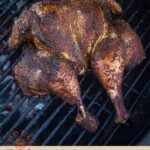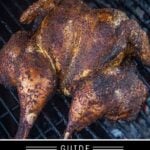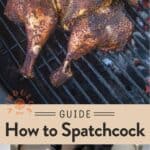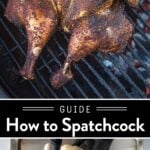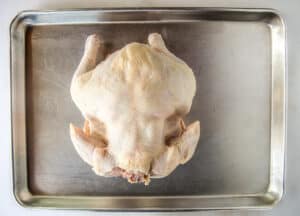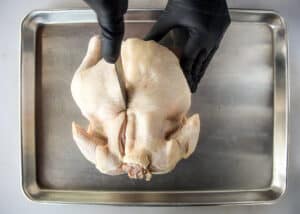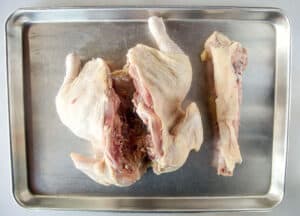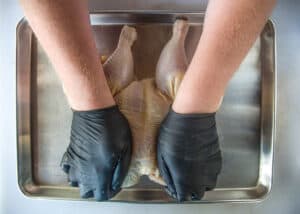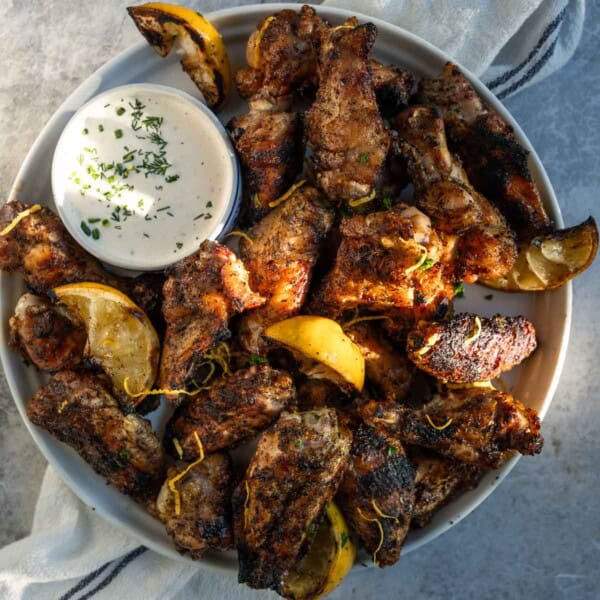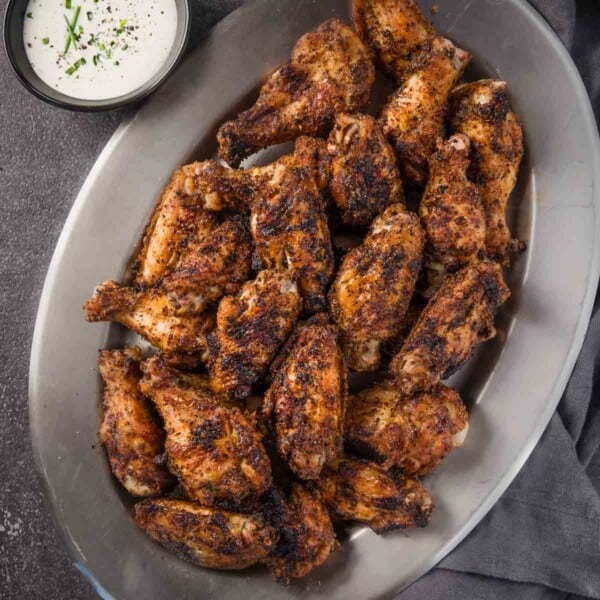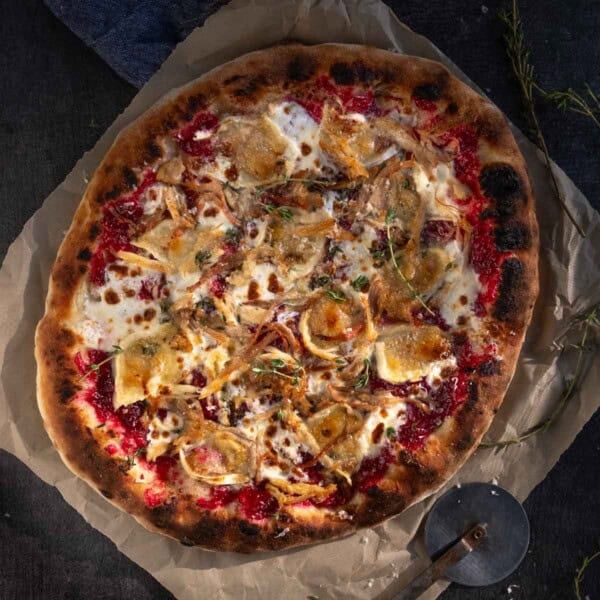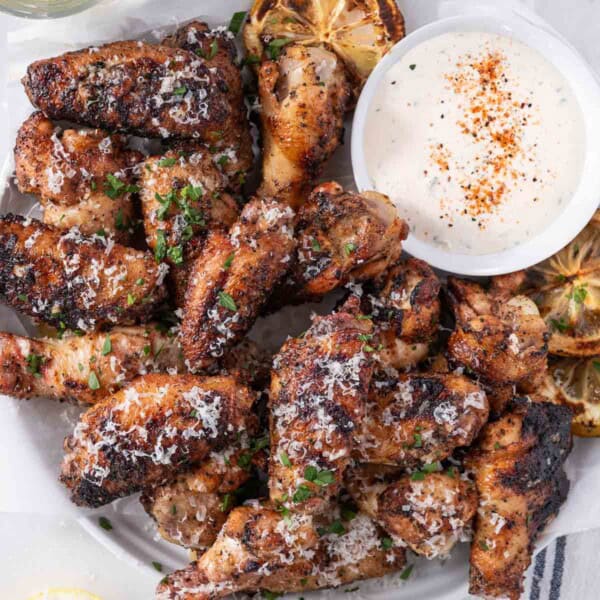This post may contain affiliate links. Read more at our disclosure policy.
Learning how to Spatchcock Chicken is one of the greatest techniques to achieving perfectly cooked chicken and turkey. This easy process of removing the backbone of the bird and flattening it only requires a good knife or scissors and delivers some of the tenderest poultry you’ll ever have.
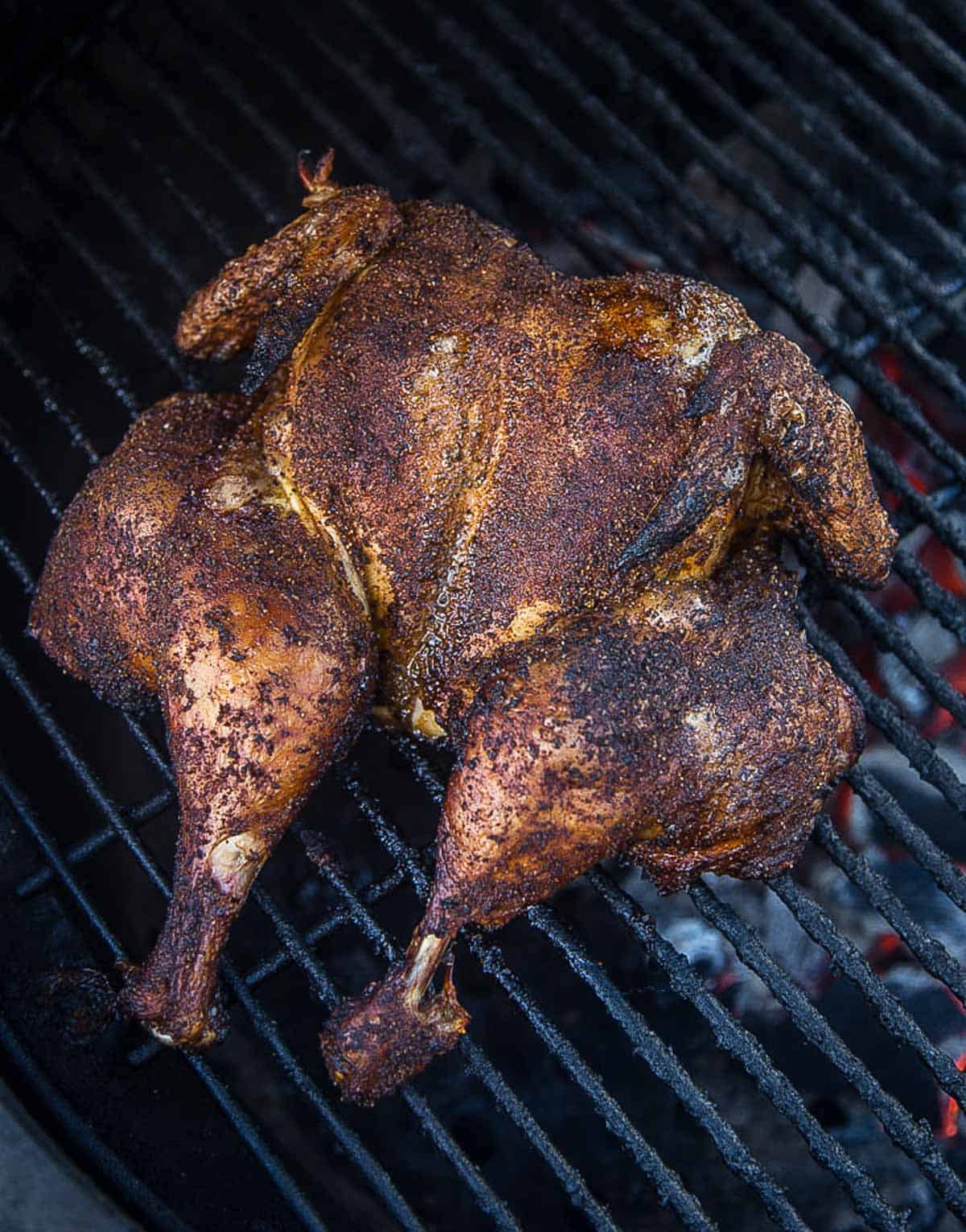
Two of our most popular posts revolve around smoked turkey and how to smoke a whole chicken. While traditionally the entire roast is what most people will strive to cook, our personal preference is to spatchcock the chicken prior to cooking. Spatchcocking will result in an even cooking surface and super tender meat throughout the bird.
You can spatchcock (or flatten) any poultry, from turkey, chicken, to quail, and even Cornish game hens. Just use the same technique for whatever bird you have. The technique we’re using here is to remove the backbone.
Table of Contents
Spatchcocking vs. Butterflying
Spatchcocking is essentially butterflying a chicken (or other bird), or removing the backbone of the chicken, flattening the chicken, and creating a uniform and flat shape to even out the cooking surface area. This allows the breast and thighs to cook evenly and avoid drying out any part of the chicken. It also speeds up the cooking process.
Some choose to remove the breastbone, however removing the backbone is easier and still maintains the integrity of the whole chicken and makes it easy to flatten.
Equipment and Preparation for Spatchcock Chicken
- A large cutting board is important to have so you have room to move the poultry.
- A good boning knife is easier for spatchcocking because you can move it through the cartilage easier than scissors. But culinary scissors also work if you have them.
- Be sure the neck and giblets are removed and the chicken is dry to make it easier to cut up. The neck, backbone, and giblets are great ingredients to add to homemade stock.
- Gloves make it easier to handle the chicken and is better for food safety. Discard gloves after use.
Chef’s Tip: Place a dry towel under the cutting board to prevent it from slipping or moving around while you spatchcock the chicken.
How to Spatchcock Chicken
Step by step process for spatchcocking (or butterflying) the chicken.
Step One: Place Chicken on Cutting Surface
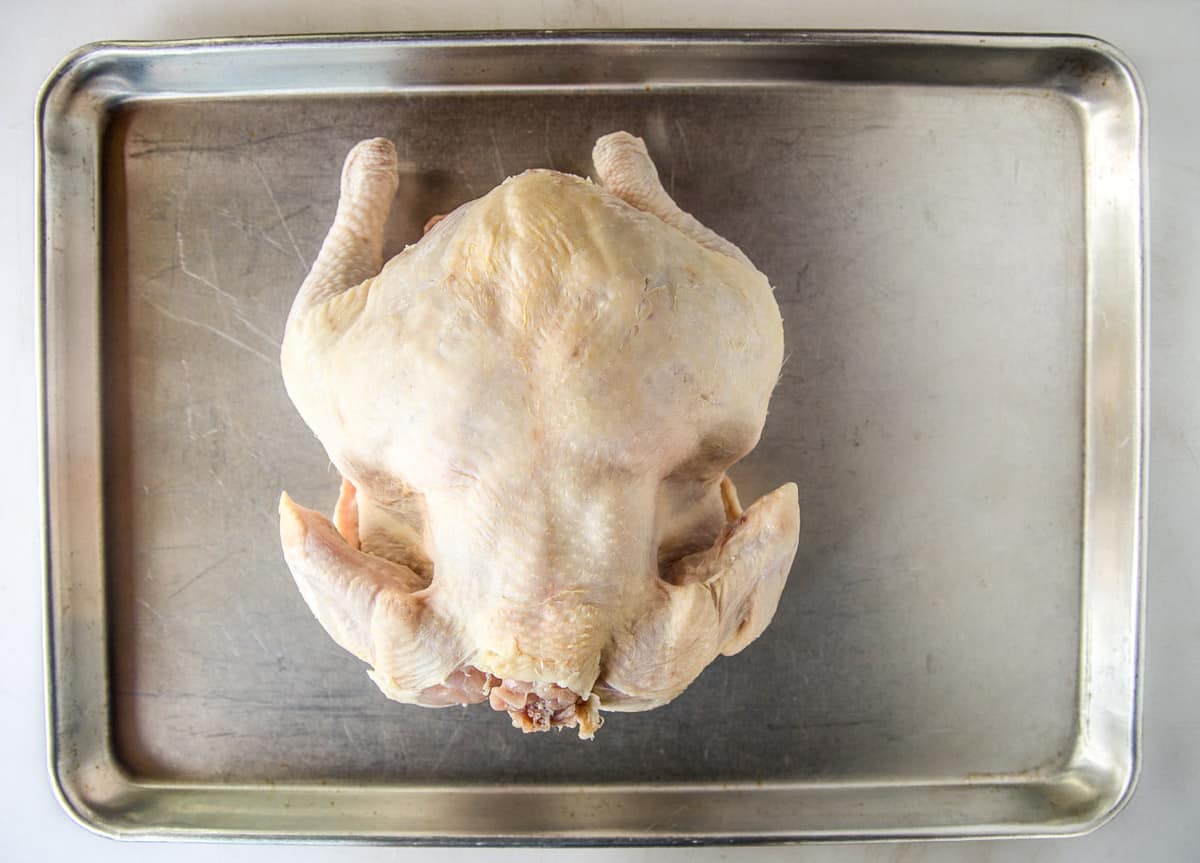
Place the whole chicken breast side down on a large cutting board or cutting surface. The backbone will be facing you.
Step Two: Start The Cut Along Backbone
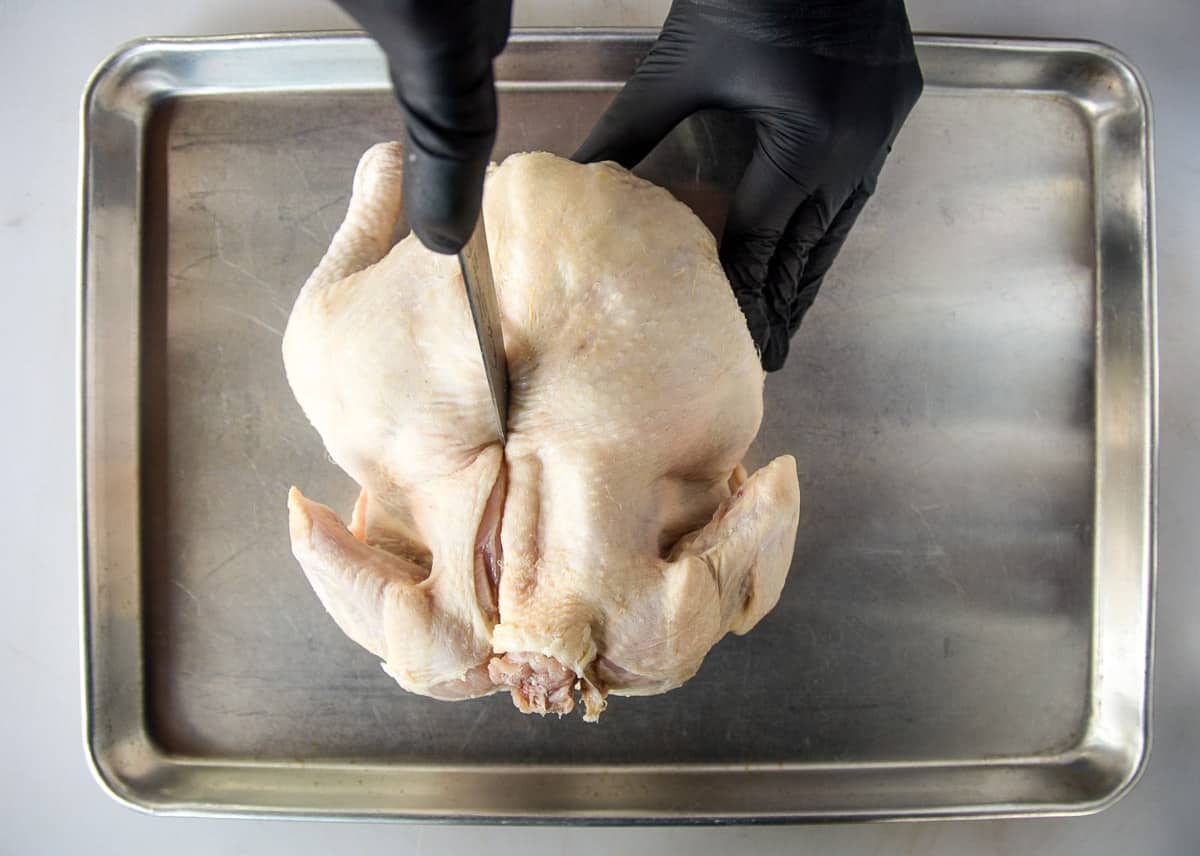
Using a sharp boning knife or culinary scissors make a small cut on one side of the backbone. You are testing to see where the cartilage and bone meet so you can make heavy downward strokes to cut through the cartilage. Once you make about a 1-inch cut, continue cutting downward along the backbone until you have cut all the way through. If you run into bone, just continue to move the knife slightly further from the backbone until it hits cartilage again.
Would you like to save this?
Step Three: Repeat and Remove Backbone
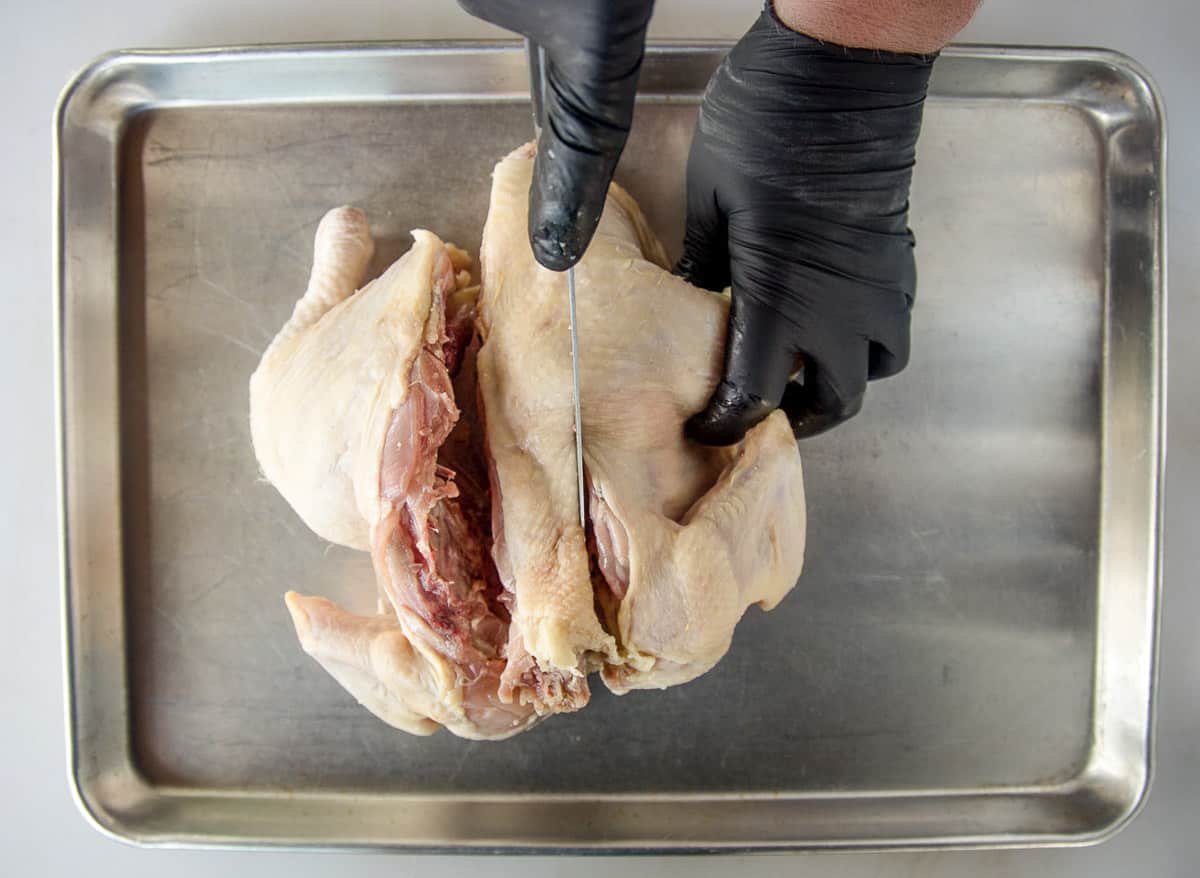
Repeat on the other side of the backbone. Discard the backbone or use for stock.
Step Four: Press Flat
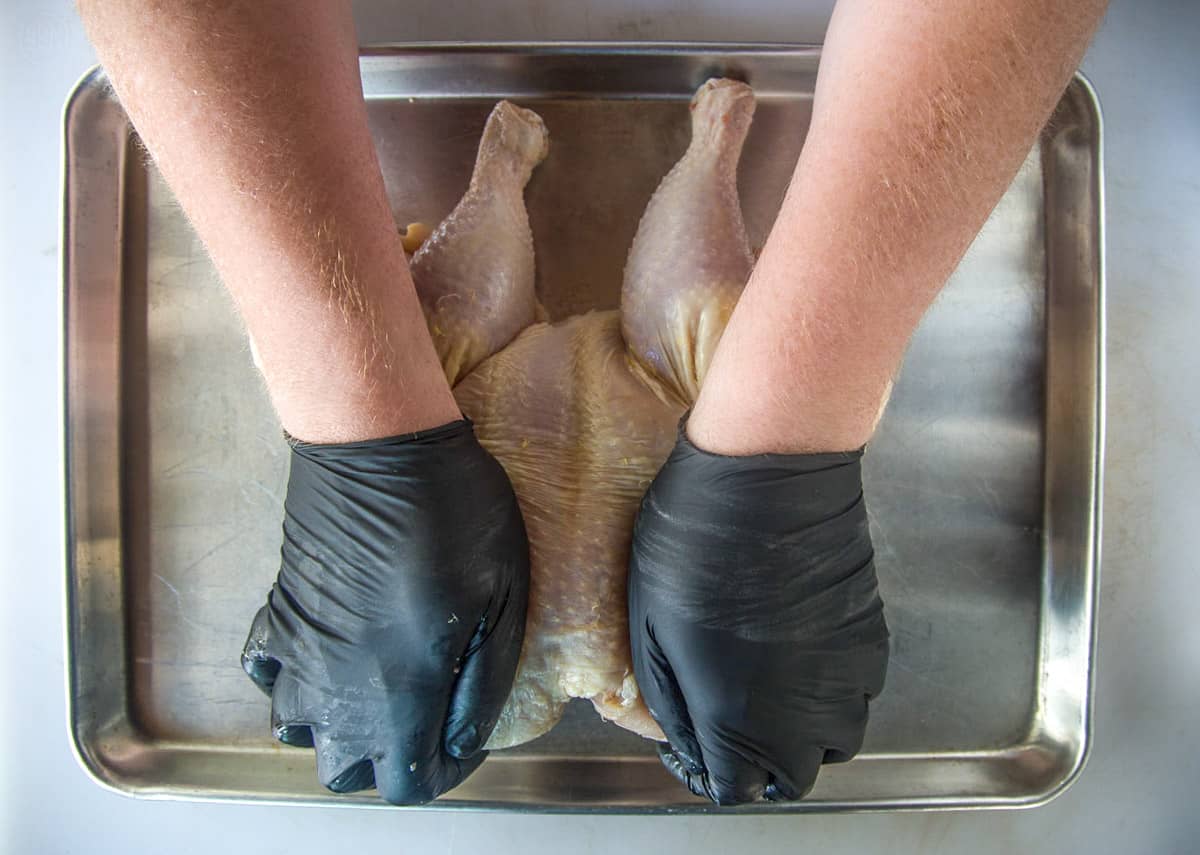
Place the bird, breast side down, and press down on each side to flatten. Flip the bird so it’s breast side up, and press again (you’ll hear bones cracking) until the chicken is flat. Or you can make a cut into the breastbone to make flattening easier. Although pressing firmly works just as well.
Step Five: Season
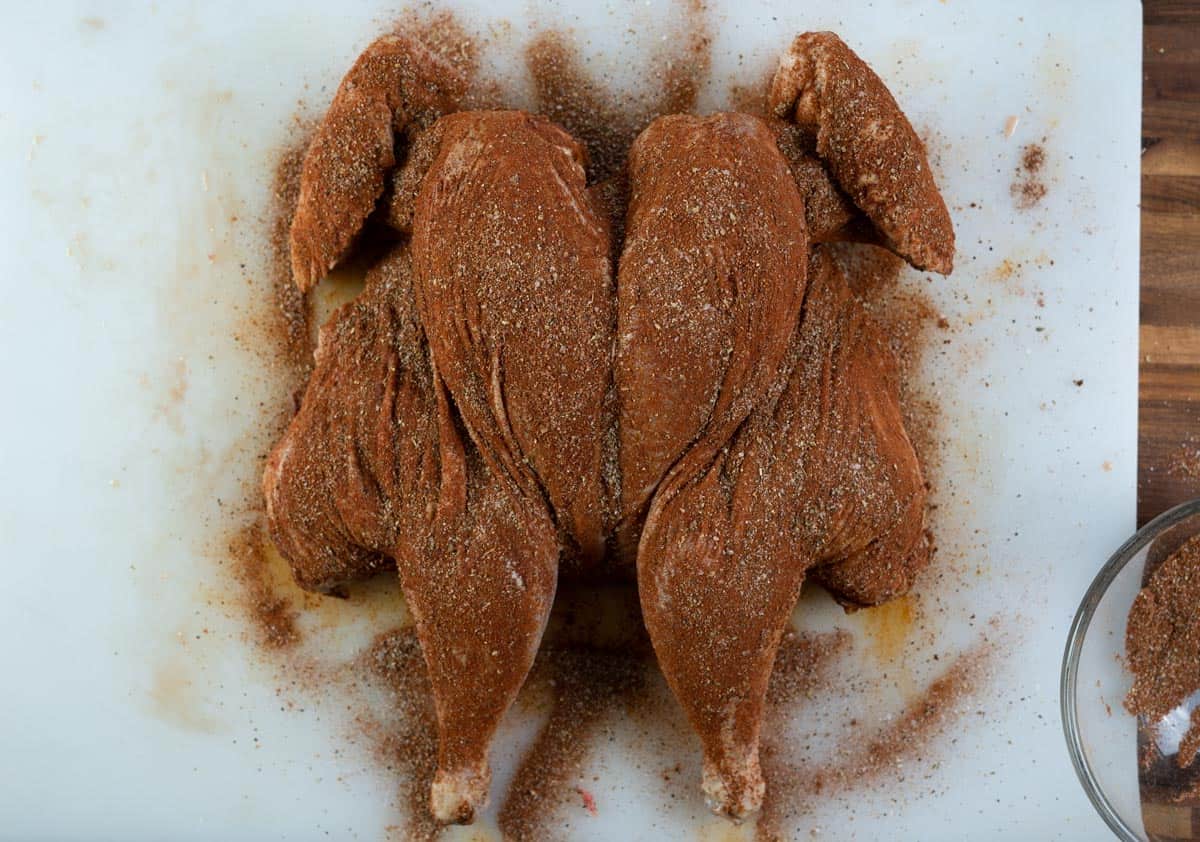
Season and prepare the chicken for your favorite recipe.
Recipes for Spatchcock Chicken (or Turkey)
Now that the chicken has been pressed flat it’s time to cook using your favorite recipes. The following are all recipes that can be adapted to using the spatchcocked method.
Note that the cooking time will be slightly less than a whole bird because you don’t have the entire cavity. It takes roughly 10 minutes per pound to cook a spatchcocked chicken or other poultry. But always cook to temperature and not time. We cook chicken and poultry to 160 degrees Fahrenheit (in the thickest portion of the bird) and then carry over cooking (when it rests off heat) will allow the temperature to increase to the USDA recommended temperature of 165 degrees.
- Smoked Spatchcocked Turkey with Cajun Seasoning
- Bourbon Brined Smoked Turkey
- Pellet Grill Chicken
- Smoked Whole Chicken
- Our cookbook also has some great recipes with this technique
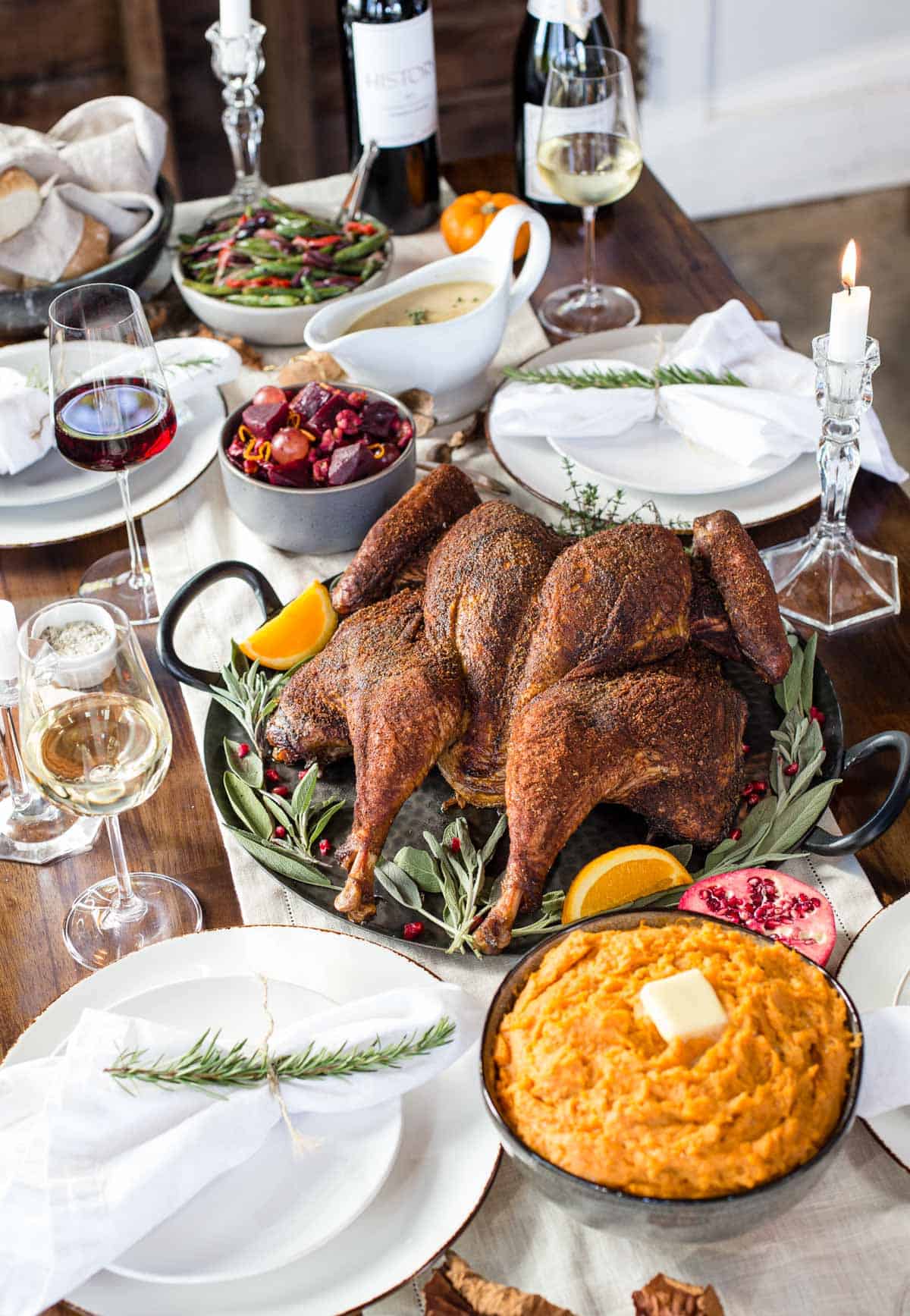
Food safety
Consider the following safety considerations when spatchcocking chicken or other poultry.
- Cook to a minimum temperature of 160 °F (74 °C)
- Do not use the same utensils on cooked food, that previously touched raw meat
- Wash hands after touching raw meat, or better yet, use gloves and then wash hands when done
- Don’t leave food sitting out at room temperature for extended periods
- Never leave cooking food unattended
See more guidelines at USDA.gov.
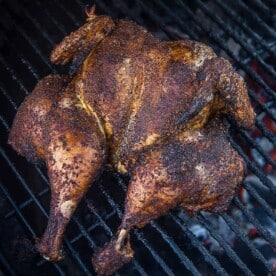
How to Spatchcock Chicken
Equipment
- Boning Knife
- Large Cutting Board
Ingredients
- 1 whole roaster chicken
Instructions
- Place Chicken on Cutting Board: Place the whole chicken on a large cutting board.
- Prep the Chicken: Stand the the chicken upright so the breast side is facing AWAY from you. You’ll be looking at the backbone.
- Remove the Backbone: Using a sharp boning knife or culinary scissors make a small cut on one side of the backbone. You are testing to see where the cartilage and bone meet so you can make heavy downward strokes to cut through the cartilage. Once you make about a 1-inch cut, continue cutting downward along the backbone until you have cut all the way through. If you run into bone, just continue to move the knife slightly further from the backbone until it hits cartilage again.
- Repeat: Repeat on the other side of the backbone. Use the backbone for stock or discard.
- Flatten: Place the bird, breast side down, and press down on each side to flatten. Flip the bird so it’s now breast side up, and press again (you’ll hear bones cracking) until the chicken is flat. Or you can make a cut into the breastbone to make flattening easier. Although pressing firmly works just as well.
- Remove the wing tips or simply tuck the wingtips under the bird and prepare to season.
Video
Notes
- A large cutting board is important to have so you have room to move the poultry.
- A good boning knife is easier for spatchcocking because you can move it through the cartilage easier than scissors. But culinary scissors also work if you have them.
- Be sure the neck and giblets are removed and the chicken is dry to make it easier to cut up. The neck, backbone, and giblets are great ingredients to add to homemade stock.
- Gloves make it easier to handle the chicken and is better for food safety. Discard gloves after use.
Nutrition information is automatically calculated, so should only be used as an approximation.
